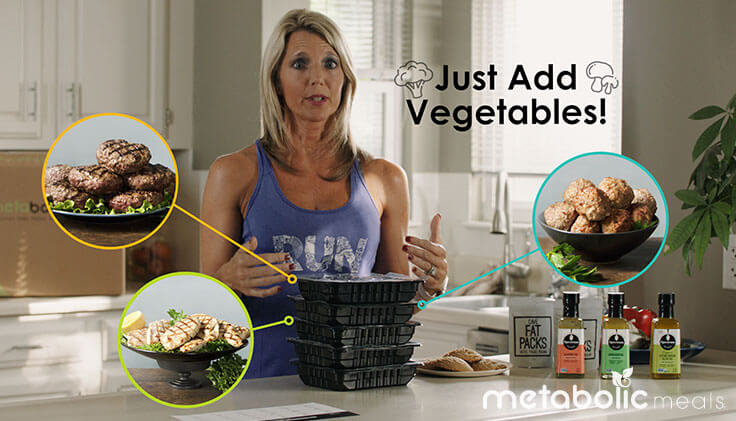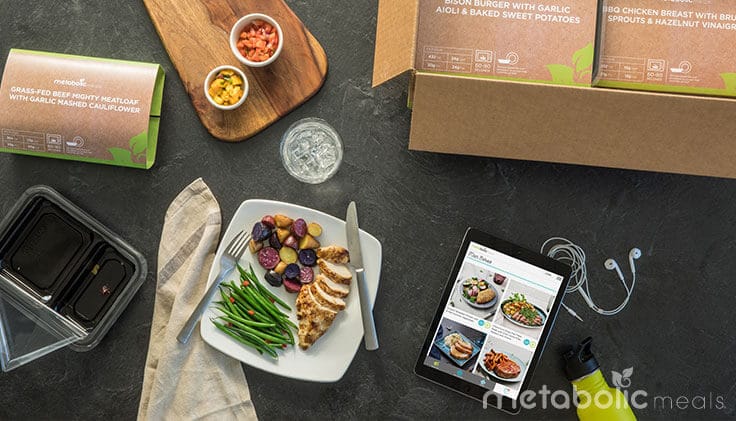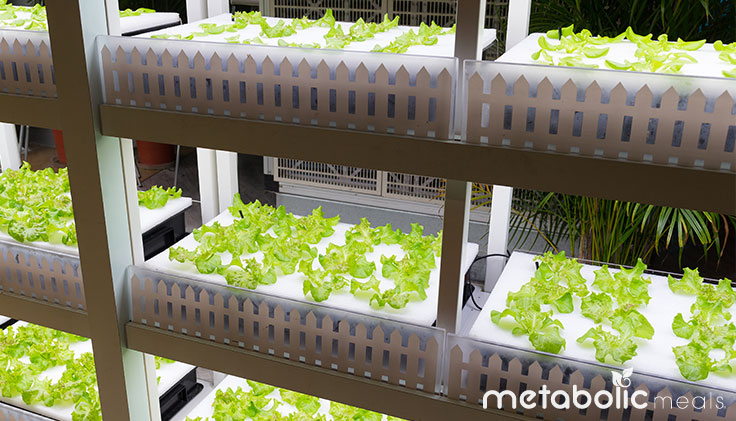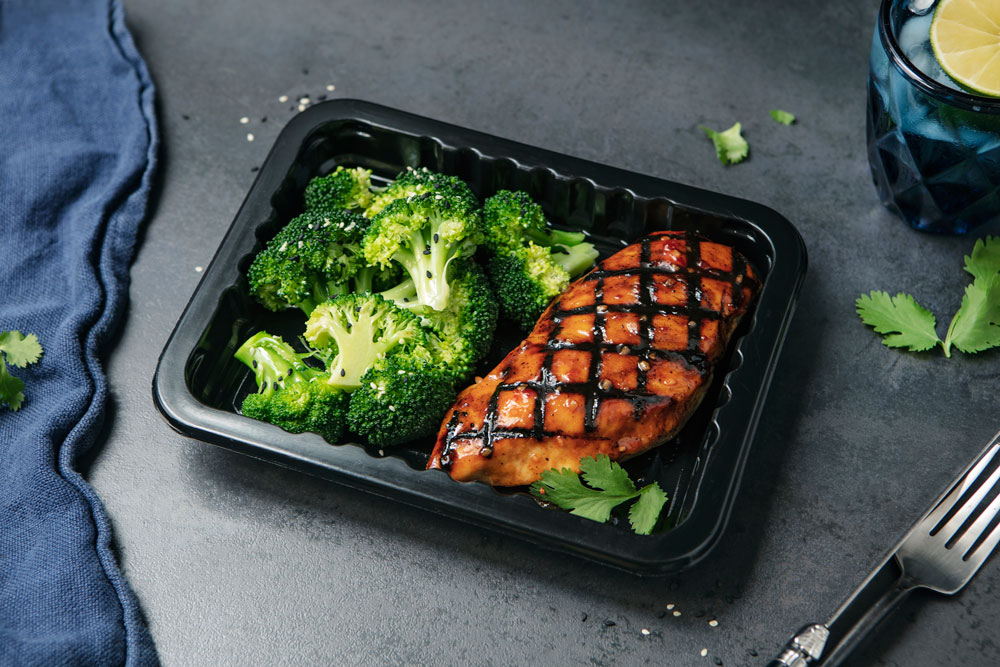ARTICLE AT A GLANCE
These seven emerging trends in the food industry are changing the way people will approach healthy eating in 2019:
Last year, losing weight was the second-most popular New Year’s resolution (just behind saving money). In fact, more than 45 percent of people surveyed said they planned to prioritize getting healthy. In their efforts to live healthier lives, many people turn to the latest nutritional trends and fad diets popping up on their social media feeds.
Dieting fads have always been popular, but with the amplification that social media allows, it’s easy to get sucked into false or conflicting information. Fad diets spread easy, but they rarely produce results and almost always fail in the end. To become trends with true staying power, diets and their results have to be validated by research and peer reviews.
I believe several food trends have more than enough potential to become long-lasting trends in 2019, with these seven to see the most traction:
1. Meal kits will become hybrid products

Ever since their introduction in 2012, meal kit delivery services have grown exponentially each year. In 2015, revenue from the industry reached $1 billion, and it’s expected to reach more than $10 billion by 2020. With more than 200 companies offering the service, the market is already becoming saturated.
Unfortunately, many of those companies are finding their business models unsustainable. Meals cost too much, offer little variety, and take more than 45 minutes to prepare. In the near future, meal kits will take fewer than 20 minutes to prepare and will include a larger variety of pre-cooked proteins, pre-chopped vegetables, and high-quality fats and spices.
2. Ready-to-eat meal deliveries will skyrocket

Meal kits became so popular because people are becoming more time-starved as well as more health-conscious. As a whole, the food delivery market is projected to grow as much as to 20 percent every year. Rather than taking hours to prepare home-cooked meals, people can have healthy, ready-to-eat options delivered right to their doors.
As prepared meal companies improve by broadening their selections, pre-made meal deliveries might skyrocket even faster than projected. With options that match consumers’ dietary and taste preferences along with higher-quality ingredients such as gluten-free pasta and pasture-raised proteins, healthy fats and seasonal vegetables, meal deliveries will become the de facto digital grocery store where consumers can buy the bulk of their weekly meals without having to source the ingredients themselves.
3. Genetic testing will create your perfect diet
Some meal plan companies will start relying more on nutrigenomics, or the study of how specific genes interact with nutrition. For example, saturated fat might be especially bad if you have the PPARG gene, which raises your risks of Type 2 diabetes. Yet people on ketogenic diets loaded with saturated fat might see dramatically improved bloodwork and fat loss. This really supports the fact that one single nutritional methodology will not work for everyone.
Nutrigenomics isn’t limited to the realm of meal plans and meal kit delivery services, though. It’s also becoming a highly accurate and robust way to help people prevent or treat diseases through enhanced nutritional health. It’s highly likely that more people will begin using their nutrigenomic data to make more informed decisions about their health and fitness.
4. Consumers will use wearables to make better food decisions
Even before genetics became a popular source of health data, people were already using wearable devices such as the Apple Watch and Fitbit to gather important health and fitness data. This data grows every year, as does our knowledge of what to do with it, and that includes how our nutrition can affect our wellness goals.
For example, in a recent study, experts found that heart rate variability can be acutely and chronically affected by the quality of your diet and timing of certain foods. This makes heart rate variability an important biomarker in the relationship between nutrition and your overall health, and wearables will become an increasingly important way to consistently measure it and other markers.
5. More vegetables will be grown indoors
Genetics and data will help us tailor more nutritious meals in the future, but building those meals is another matter. Indoor farming is becoming one of the fastest-growing trends in eco-friendly agriculture as it incorporates greener, safer, and cheaper processes than traditional farming. It also makes it much easier to avoid the overuse of pesticides and grow food more organically.
An indoor farming environment is more controlled, meaning there are no specific growing seasons and that crop cycles rotate much more quickly. Indoor farming is much more sustainable as well: According to AeroFarms, owner of the largest indoor vertical farm in the world, its technique uses as much as 95 percent less water than field farming, thanks to a closed-loop water circulation system.
6. Blockchain technology will improve ingredient transparency
Indoor farming is only one of the innovations that are poised to transform modern diets and healthy meal plans. Others, such as the IBM Food Trust, are making it easier for consumers to see how their favorite products are produced, packaged, and shipped. The initiative uses blockchain-based cloud technology to keep every step of the food supply chain transparent.
The goal is to eliminate many of the problems faced by current supply chain standards, helping producers and providers reduce waste and improve safety. It also boosts consumer confidence that products are as natural and organic as advertised. The more data is shared, the more improvements we’ll see in the quality and transparency of popular meal ingredients.
7. CPGs will double down on healthy choices
Realizing that consumers are prioritizing better, healthier ingredients in all their food choices, more established consumer packaged goods companies are taking note. Top players including Nestlé and Kraft Heinz have said increased demand for healthy products has stunted growth during the previous year. Some are acquiring healthier brands to broaden their product profiles accordingly.
According to Kelsey Groome, managing director at TRAUB, this is more than just a trend; it’s characteristic of how Millennials choose all brands they interact with. Companies that aren’t used to winning consumers through product quality and transparency will face an uphill battle in keeping up if they don’t hop on the bandwagon right away.
Many of these trends have been growing in popularity for several years already. This year, though, the culmination of more advanced technology, increased consumer interest in better food quality, and a growing demand for
convenient delivery services will solidify them as important developments in our modern diets — not just passing fads.
Jason Barbour is a highly sought-after strength and nutritional consultant for busy executives and has worked with professional athletes from the NFL, NHL, and UFC, including three world champions and an Olympic medalist. In 2009, Jason started Metabolic Meals, one of the country’s largest healthy meal delivery companies with thousands of customers nationwide.










